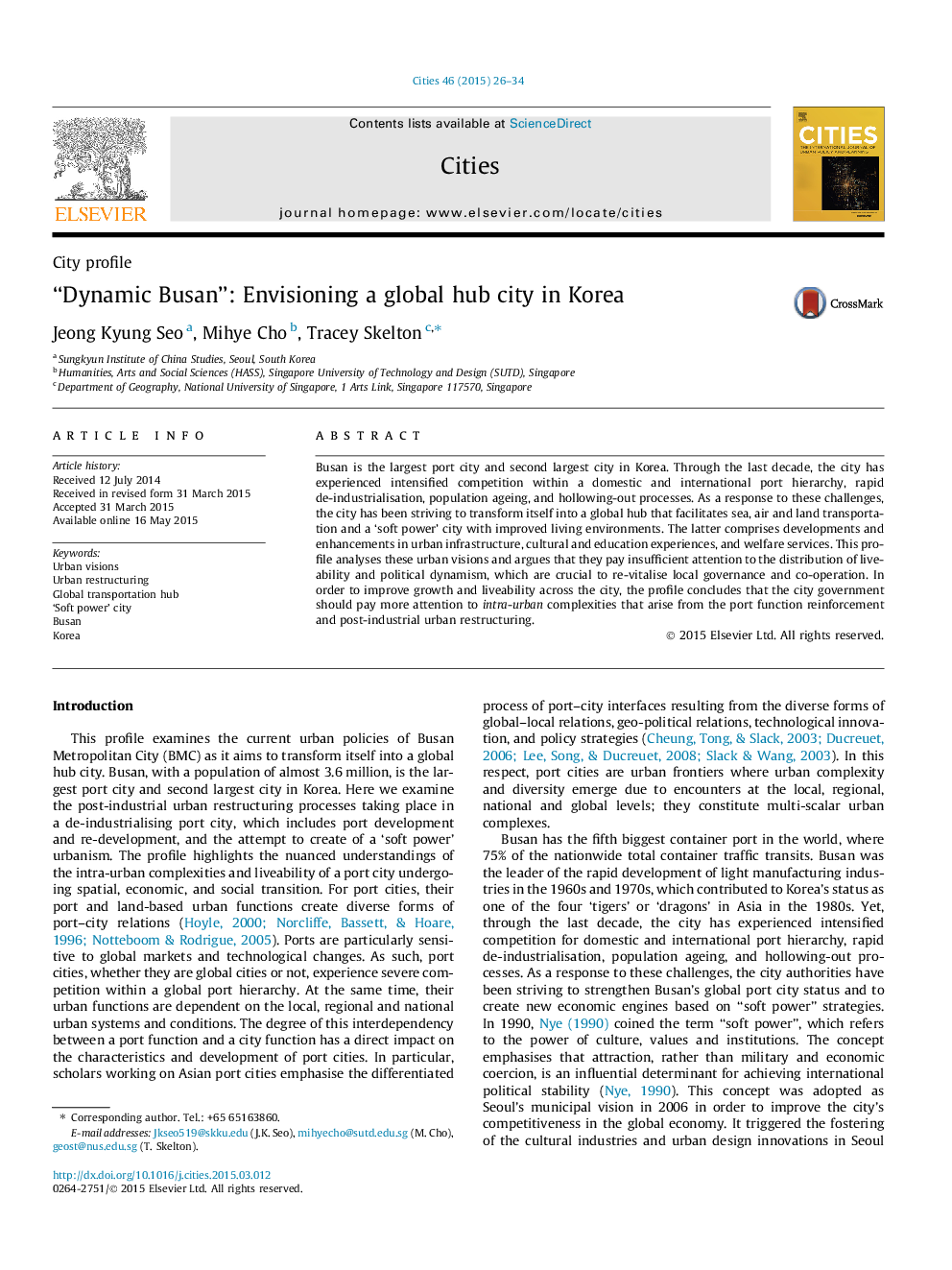| Article ID | Journal | Published Year | Pages | File Type |
|---|---|---|---|---|
| 1008264 | Cities | 2015 | 9 Pages |
•Busan is the largest port city and second largest city in Korea.•It is undergoing rapid de-industrialisation, population ageing and hollowing-out processes.•Its current urban visions, captured under the place branding of ‘Dynamic Busan’, focus on constructing a hub for international sea, air and land transportation, and re-developing itself as a soft power city with improved living environments, cultural and education experiences, and welfare services.•However, these urban visions need to pay more attention to intra-urban complexities arising from the concurrent pursuit of the port function reinforcement and post-industrial urban restructuring.
Busan is the largest port city and second largest city in Korea. Through the last decade, the city has experienced intensified competition within a domestic and international port hierarchy, rapid de-industrialisation, population ageing, and hollowing-out processes. As a response to these challenges, the city has been striving to transform itself into a global hub that facilitates sea, air and land transportation and a ‘soft power’ city with improved living environments. The latter comprises developments and enhancements in urban infrastructure, cultural and education experiences, and welfare services. This profile analyses these urban visions and argues that they pay insufficient attention to the distribution of liveability and political dynamism, which are crucial to re-vitalise local governance and co-operation. In order to improve growth and liveability across the city, the profile concludes that the city government should pay more attention to intra-urban complexities that arise from the port function reinforcement and post-industrial urban restructuring.
